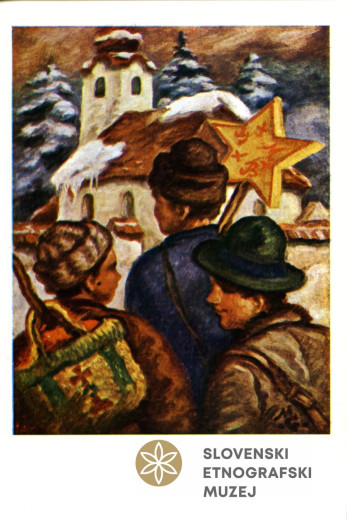Date: 21. November 2024
Maksim Gaspari, the legendary Slovenian painter, was a true master at capturing the essence of the Slovenian spirit. His paintings are vibrant, lively, and filled with a deep love for the Slovenian countryside.
Maksimiljan Gabrijel Gaspari (1883-1980) was born on a farm in Selšček near Cerknica, where he experienced a simple and tough rural life from a young age—a lifestyle he would later bring to life on his canvases and in his illustrations. As a young man, he worked as a shop assistant.
His life, however, took a dramatic turn when he was noticed by Josip Nikolaj Sadnikar, an art connoisseur and folk culture collector.
Impressed by Maksim’s talent, Sadnikar decided to support the young Gaspari (whom he affectionately called Gašper), funding his education as long as necessary. He sent him to study in Ljubljana and Vienna, and even arranged a studio for him in his own house in Kamnik, where Gaspari created during his stay. Thanks to Dr. Niko Sadnikar, Maksim Gaspari became the artist we know and celebrate today.
For the People, From the People
Gaspari’s art went beyond depicting scenes; his works embody the spirit of the Slovenian people: pride, resilience, love for home, and respect for traditional customs. In each character he painted, he captured a sense of unity that connects Slovenians.
In Vienna, Gaspari helped found the art association Vesna. Their motto, which became Gaspari's lifelong mission, was “For the People, From the People.”
Many notable figures, including Ivan Cankar and Hinko Smrekar, also studied in Vienna at that time. Gaspari was an ardent supporter of the Carinthian plebiscite, creating postcards and leaflets on the topic.
Awards and Recognition
In 1952, the Council for Culture and Education awarded him the Prešeren Award, though it was not his only honor. In 1953, he received the Levstik Award from Mladinska Knjiga and was also decorated with the Order of Labor with the Red Banner for his contributions to the development and popularization of visual arts. In 1972, he became a full member of the Slovenian Academy of Sciences and Arts.
An Artist Known in Every Slovenian Home
Gaspari mastered all painting techniques—from oil on canvas and wood to pencil on paper—immortalizing fleeting images of rural life. In addition to postcards and greeting cards, he also illustrated books, created satirical political illustrations and caricatures, traditional nativity scenes, diplomas, awards, certificates, signets, initials, flyers, advertisement boards, sales catalogs, posters, profiles of prominent individuals, craft templates, hanging decorations, packaging labels, metal boxes, perpetual calendars, educational illustrations for schools, glass paintings, and more.
Generations grew up with Gaspari’s illustrations, admiring his clear yet soft lines that could evoke a girl’s grace, a farmer’s cheerfulness at work, or the idyllic nature of a hometown. Through his artistic postcards, he sought to create an affordable piece of art for every Slovenian, something akin to a miniature painting that celebrated local life and honored the dedication of farmers.
Gaspari's art was rooted in the tradition of folk costumes and the lyrics of folk songs. He also illustrated important events for the Slovenian nation. Gaspari gained particular popularity for depicting national themes, seasons, Slovenian Madonnas, and Slovenian Christmas and Easter customs, celebrated with special warmth by Slovenians.


















